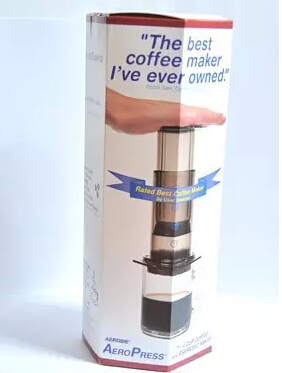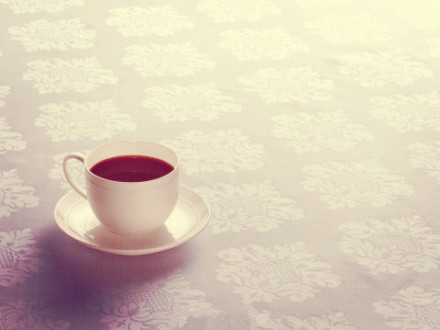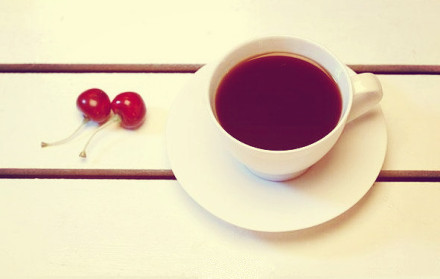How to make coffee by pressing coffee
In about 2010, with curiosity, I bought some coffee beans that won the Golden Bean Award at north coast coffee (http://northcoastcoffeeroasters.com.au/)). At that time, I had some communication with Mark Hoza, who was in charge of sales. In my correspondence with him, I first came into contact with the Aeropress, which is used to make coffee. Because he and roaster Richard like the coffee made by Philharmonic pressure so much that it even surpasses Espresso. Later, I saw that the packaging of the early Aeropress also included Mark's quote, which seemed to be the best coffee making tool in the world.

Regardless of whether what he said was exaggerated, lovely Le Pu did come into my sight in such a high profile. Later, last year, when I began to try Philharmonic pressure, I found that Philharmonic pressure does have its charm. Because it is easy to make, it tastes clean, and it can be adjusted according to our taste. Today, I will first use the picture to introduce how to make it. Then I will briefly describe the principle of the Philharmonic pressure and tell you some variables that we can adjust with the Philharmonic pressure.

First of all, the various parts of the Philharmonic pressure, instead of telling what they are used for, should be described in the later production.
I'll make about two portions. Generally speaking, one portion is 8-10g. Two, that is, about 16g-20g.
At the same time, I will set the water at 1:10. So for 10 g of powder, the corresponding water is about 100 g (ml). Please note that this is not an absolute value and will be adjusted later according to the texture. The temperature of the water is 75-96 °. What? Such a big span? The water temperature is inversely proportional to the freshness of coffee. The fresher it is, the lower the temperature can be. Remember the fourth point I mentioned in the preface. If the coffee is not fresh and there are fewer substances that can be extracted, then high temperatures can cause more matter to be dissolved per unit volume of water. In other words, there is not much good material left, so it is necessary to improve the efficiency of dissolution.
This Colombian Snow Mountain is only a week old, so I set the temperature at 80 °. But remember, not all beans are at 80 °in a week, because the taste is introduced, and there is a difference between coffee beans and coffee beans.

I set the degree of grinding to be on the fine side. But it's thicker than espresso. Please note that whether your grinding equipment is manually or electronically controlled, these are adjusted. It has to be mentioned here that because the density of the filter paper of the Philharmonic pressure is still very high, so its requirement for the grinding machine is not very high.


The thickness of the powder is for your reference.

Pour the powder into a container filled with filter paper.


Add hot water just 80 degrees.

Stir a little (about 6-7 times)

All right, stand still for about 30-45 seconds. Because beans are only a week old. It's fresh.


After 30-45 seconds, begin to press down. Pay attention to a key point here, do not use brute force, just press down slowly. The total time should be about 20 seconds.

The great task has been completed
Last time I drank Columbia Snow Mountain. The taste of dried fruit is obvious, with a hint of plum. The aftertaste is very comfortable.
The principle of Philharmonic pressure:
Back to the preface, http://www.douban.com/note/205350767/. The principles mentioned later. Any coffee is extracted through water.
The same is true of Philharmonic pressure, which is first soaked by water injection. Then rely on a certain amount of pressure to extract the water mixed with coffee through the filter. Because the filter paper has a certain density, the particles that do not dissolve with water are filtered, leaving behind coffee with a clean taste.
Therefore, in view of the principle of making tools, we can change the flavor of coffee a little bit. And there are many ways to play:
1. Change the ratio of water to powder.
This is very intuitive and can change its concentration.
two。 The thickness of grinding
The finer the coffee powder, the higher the proportion of coffee powder will be extracted. You tend to get a more sour taste.
But if it is too thin, it may penetrate the filter paper, making the taste not very clean.
3. One piece of filter paper becomes multiple sheets.
It can filter out more particles.
4. Time of push
This is the process of generating pressure, and if the time is longer, there will be more extraction per unit time.
5. Soak time
The longer the time, the more substances are dissolved. But it is not the more the better, it may bring more miscellaneous smell. Of course, if the coffee is not fresh, sometimes it is necessary to soak for a long time.
6. Reverse immersion
The careful friend found that the water had already begun to seep when it was soaked. Coffeegeek discovered a way of anti-immersion a few years ago. I'm going to describe it in Philharmonic pressure 2. Interested friends can check it out at coffeegeek.com.
Important Notice :
前街咖啡 FrontStreet Coffee has moved to new addredd:
FrontStreet Coffee Address: 315,Donghua East Road,GuangZhou
Tel:020 38364473
- Prev

Discussion on extraction area and time of Coffee
In this article, I will talk about how to increase and decrease the amount of coffee at the theoretical level.
- Next

Seven tips for making coffee, techniques for making coffee.
First of all, congratulations on joining you in making your own coffee! Self-brewing coffee is not only more mellow and delicious than buying ready-made canned coffee and instant coffee, but also caffeine is only half the content of canned and instant coffee. It is not only delicious, but also drinks healthier. It is indeed the most smart choice! After many beginners try to make their own coffee, they will be curious to make the coffee.
Related
- What is the meaning of lactic acid fermentation with coffee bean treatment?
- How to judge the state of foam by sound?
- How does the latte pull out the unicorn pattern? Come to get for a little trick to improve the flower pull!
- Will flower pulling affect the taste of the latte?
- Do you know the history of coffee?
- The difference between honey treatment and sun washing what is raisin honey treatment?
- What kind of milk can a novice use to make coffee foam to keep the foam longer? The correct method and skills of milking tutorial sharing
- Why do washed coffee beans taste sour? Flavor characteristics of washed Coffee
- Introduction to the skill of how to practice the size and height of water injection around the circle of hand-brewed coffee
- How do beginners practice coffee flower drawing from scratch?

